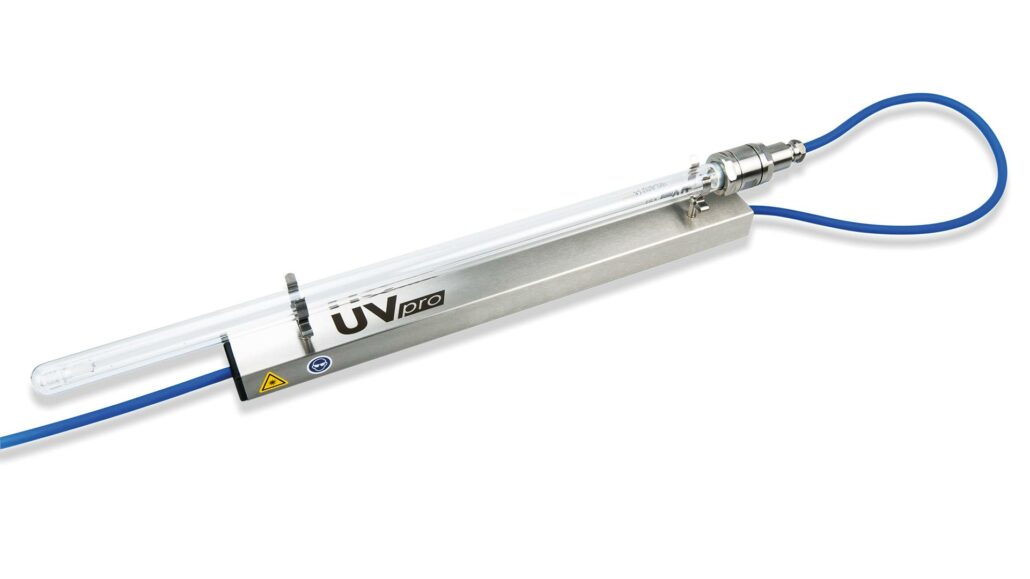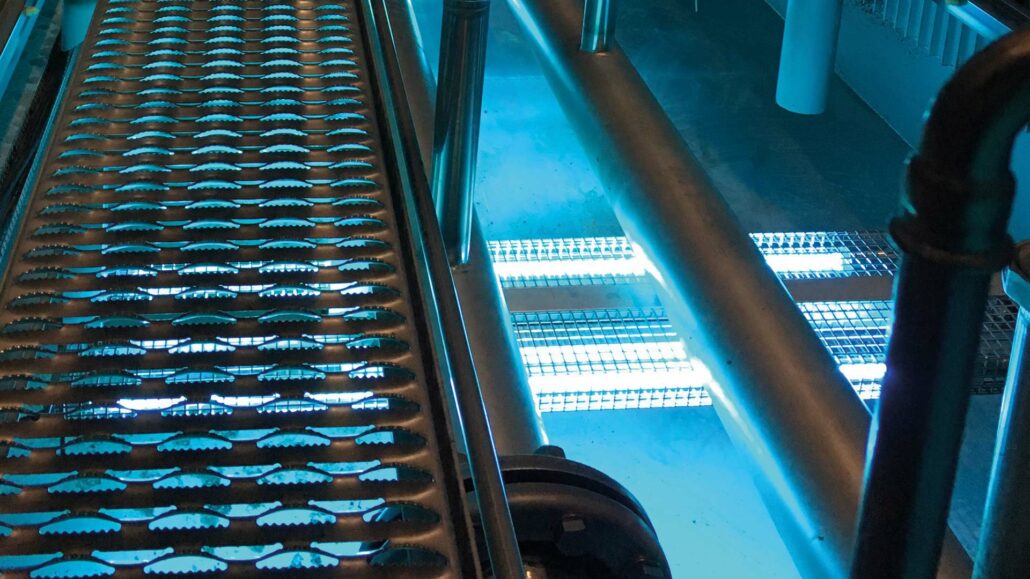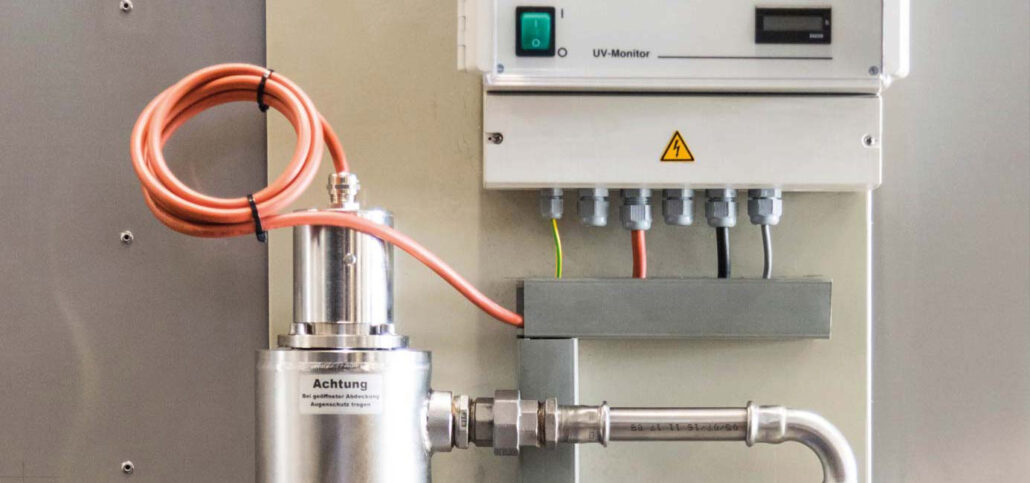Technical solutions
for pure water
Water treatment
According to ArbStättV (German Workplace Ordinance) and Betriebssicherheitsverordnung (German Ordinance on Industrial Safety and Health), operators are responsible for ensuring that the hygienic operation of the humidifier satisfies the requirements for air humidifiers.
Important information concerning this can be found in VDI 6022 as well as the operating instructions for the air humidifier itself. These stipulate that air humidifiers must basically be operated in a way that prevents any proliferation of microorganisms.
The wet areas within the air humidifier promote microbial proliferation. To prevent the total colony count from increasing above the limit value set out in VDI 6022, we recommend water sterilisation in addition to regular cleaning.
Compliance with hygiene requirements must be ensured and recorded by means of regular inspections (Hygiene checks/Hygiene inspections).
Hygiene-compliant operation
To ensure compliance with the hygienic operation requirements, the system components and maintenance measures are subject to special requirements:

Quality
Supplied water must meet the
microbiological requirements
of the German Drinking Water Ordinance

Accessibility
Good accessibility of the
areas exposed to water

> 48h downtime
Where longer downtime phases (>48h) occur the humidifier tray as well as all water-conducting components must be completely emptied. Installations with an effective sterilisation system are exempt from this rule

Total colony count
The total colony count in the humidifier water must be below 1,000 CFU/ml
Available equipment
which can be combined depending on the application:
Manual/automatic elutriation
Recirculating water spray humidifiers (air washers) experience thickening of the circulating water due to water evaporation and dirt particle washout. Elutriation equipment is used periodically to offset the concentration of foreign matter and prevent operational malfunctions due to excessive contamination.
Manual elutriation is therefore a component of every Lavair air washer.
The elutriated water flow is either set manually via a ball valve – manual elutriation – or regulated via a motor-driven ball valve – automatic elutriation – in line with the measured guide value – fully automatic elutriation.
Alternatively, time interval controlled elutriation – partially automated elutriation – available without conductometry.
The automated operation mode has the advantage of utilising demand-oriented elutriation. Fluctuations in the output of the humidifier as well as the pollutant input are compensated in a process-safe manner, thus maintaining a constant water quality.


UV immersion emitters
The UV immersion lamps are installed directly underwater within the humidifier tank. This means that the complete tank contents are simultaneously sterilised.
Depending on tank size, a variable number of immersion lamps are installed to obtain the best possible effect.
UV reactor
The external UV sterilisation system consists of a stainless steel UV reactor with an internal UV lamp, an electronic monitoring unit, a UV sensor and a pressure or flow switch.
The water is drawn from the tank with the help of a circulating pump, pumped through the reactor and then reintroduced back into the tank.
The monitoring unit measures the UV radiation intensity as well as the running time of the lamp and generates an alarm message if the maximum running time is exceeded or the minimum required radiation intensity is not reached.

Physical water sterilisation
UV-C radiation of wavelength 254nm has the special effect of altering the DNA of bacteria and viruses in such a way that reproduction is no longer possible.
In contrast to chemical sterilisation methods, microorganisms do not develop any resistance to UV light.
Furthermore, UV light cannot be overdosed.
There is a distinction between UV immersion emitters and UV reactors.
Chemical
water sterilisation
The use of chemical water sterilisation is the “last resort” to ensuring compliance with the hygiene requirements. Physical sterilisation systems should be used beforehand. Chemical water sterilisation should therefore always be used as a supplement to these systems. Products based on hydrogen peroxide or chlorine dioxide are optionally used as a biocide.
The dosing station used in each case is designed as a combination unit consisting of elutriation equipment and a dosing unit.
The addition of hydrogen peroxide is purely time-controlled.
The addition of chlorine dioxide, on the other hand, is requirement-controlled.
The free chlorine dissolved in the water is determined via a measuring cell and controlled according to a preset value.
